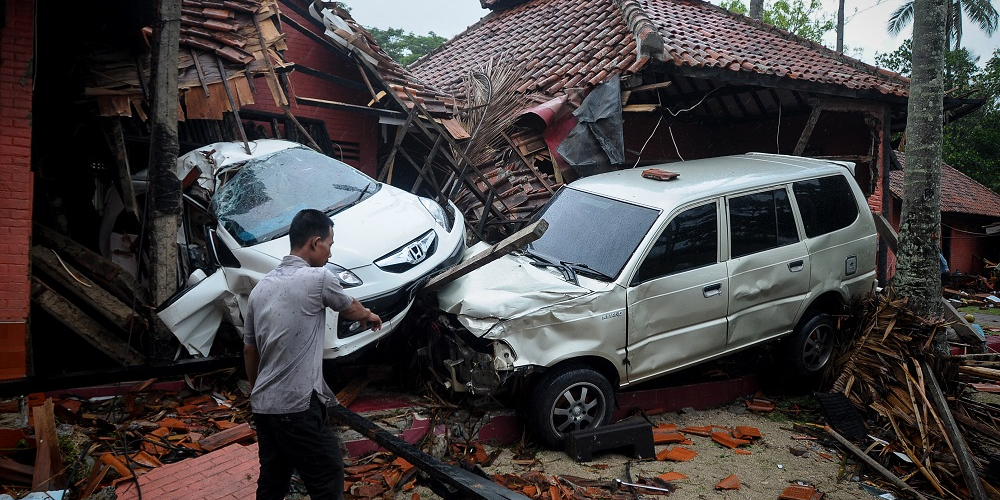- At least 373 people were killed and more than 1,400 are injured after a tsunami struck Indonesia’s Sunda Strait on Saturday night, Indonesian authorities said.
- Officials also confirmed that the tsunami was triggered by the partial collapse of the nearby Anak Krakatau volcano, which caused an underwater landslide and eventually a tsunami.
- Because a volcano and not an earthquake caused the tsunami, officials couldn’t trigger an early warning, and residents didn’t see or feel any warning signs.
At least 373 people are dead in Indonesia after a tsunami struck west Java, the country’s National Agency for Disaster Management said Monday night local time.
An additional 1,459 people are injured and 128 are missing as of 5 p.m. local time (5 a.m. EST/10 a.m. GMT), agency spokesman Sutopo Purwo Nugroho said.
The tsunami struck coastal areas along the Sunda Strait between Java and Sumatra on Saturday night without warning. It was triggered by the partial collapse of a nearby island volcano, authorities said on Monday.

The latest toll jumped dramatically from earlier on Monday, when authorities recorded 281 deaths around 12:30 p.m. Nugroho said that rescue officers managed to cross previously damaged roads during that time.
Some 681 houses, 69 hotels and villas, 420 boats and ships, and dozens of vehicles, stalls, and shops were damaged as well, Nugroho said.
Read more: Photos show the devastation from Indonesia's tsunami as the death toll rises

A volcanic collapse, then an underwater tsunami
The southwest section of the Anak Krakatau (also spelled "Krakatoa") volcano collapsed and slid off into the ocean, The Guardian reported.
"This caused an underwater landslide and eventually caused the tsunami," said Dwikorita Karnawati, the head of Indonesia's meteorological agency, according to The Guardian.
The fact that a volcano and not an earthquake caused the volcano meant that authorities couldn't trigger a tsunami warning, and coastal residents reported not seeing or feeling warning signs before the tsunami hit on Saturday night.
A wall of water inundated populated coastlines around 9:30 p.m. that night as resorts and towns welcomed regional holiday makers, leaving scenes of devastation along both coasts.

The tsunami waves struck in succession along Pandeglang, Serang, South Lampung, and Tanggamus regencies, said Médecins Sans Frontières, according to Reuters.
The identities and nationalities of all the victims are not yet known. Nugroho previously said that the beaches along Pandeglang were packed with local tourists when the tsunami hit.

'Ring of Fire'
Indonesia sits on the Pacific Ring of Fire and is particularly vulnerable to earthquakes.
The entire region had already stepped up its early warning systems after a tsunami originating in the Indian Ocean killed 226,000 in 13 countries in 2004. More than 120,000 of those deaths occurred in Indonesia, mostly in Aceh province.
This tsunami is the latest natural disaster to strike Indonesia this year.
An earthquake struck Lombok, a popular tourist destination near Bali, this August, devastating entire towns and killing more than 300 people.
A month later another earthquake and its resulting tsunami inundated Palu on the island of Sulawesi, leaving coastal regions wiped out and more than 2,000 dead.
